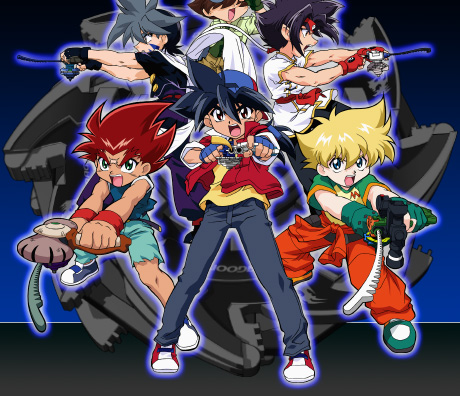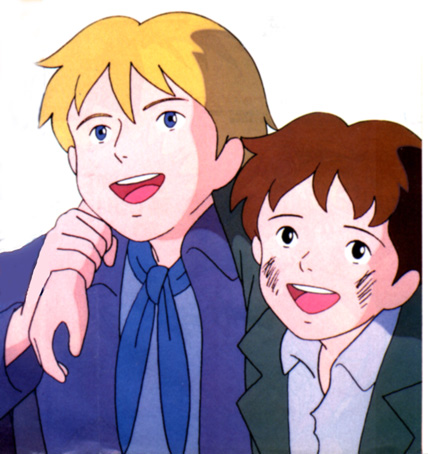Censorship itself as a term, apart from cartoons, is debatable. Some think that it should not exist, while others believe it should exist to an extent. Others think that there should be no censorship at all, and leaving the choice to viewers to watch what they want to watch and ignore what does not agree with their ideas or interests. But cartoon censorship is different from any other kind of censorship, for two main reasons. First of all, cartoons are thought of as "for-kids" material, so many people may never think that cartoons can be subject to that process. Secondly, many (or most of) cartoon viewers are children. So, what you censor so that a kid doesn't see is definitely different than what you'd censor for an adult not to see. The fact that many cartoons have mixed audiences poses a big problem here, because in many cases, you're not sure: who's really watching the show? Is it children, teens, adults or a mix of all these demographic groups?
Let's take the first question: why do censorship for cartoons? The obvious answer is "because kids watch them", but I believe that the more realistic answer is not that kids watch cartoons, but because are being influenced by cartoons (especially their favorite shows) in their behaviors and ideas. On one side, I believe censorship is a good sign because this means censors have come to realize that cartoons do influence kids and that they're not just nice shows, but rather teachers in many cases who tell the child how to act, think and sometimes even how to dress. So, if you ask me, I believe censorship as a general procedure, is right. But that's on the general level. This doesn't mean that I agree with all kinds of censorships of course. By the way, at first, I was totally against cartoon censorship. I used to believe that when a kid watches a cartoon and finds a scene is being suddenly cut, this will trigger many questions in his mind and drive him to think about what's being censored rather than concentrating in the show. But when I did some internet research, I came to understand how cartoons really influence kids. The more that influence, the more attention that should be paid to these shows.
This leads us to the second question: where to do censorships? This is also very debatable. Although I believe cartoon censorship is a must in some cases that I'll be telling you later, I believe that cartoon censorship should not be practiced everywhere. Take the Shrek movie for example. It was shown on MBC 2 movie channel (which is for adults) and on MBC 3 (which is for kids). On both channels, the movie was censored in the same way. The same scenes were cut from both versions. This does not make sense to me, because how do you expect the audience of a kids channel to be the same as that of a movie channel? When you omit some kissing scenes from the kids' version, this may make sense, but omitting them from the adults' version is unexplainable because MBC 2 does not omit kissing senses in regular movies. Is it just laziness from the censors to use 2 versions for the same movie? Maybe yes and maybe no. A more practical solution is to place cartoons that are not suitable for all kids at night, where younger kids may not be awake. For example, Cartoon Network TV shows a cut-version of Dragon Ball Z, a Japanese anime in the morning, and at night, they air the un-cut version.

The most debatable question, however, is when to censor: in other words: what to censor. Personally, I believe cartoons should be slightly censored in very few cases, when there's really some explicit or obviously suggesting scene in a cartoon. Otherwise, there should be no censorship. Let's first look at MBC 3 and Space Toon TV, which are two of the most popular Arab cartoon TV stations in the Arab world. What MBC 3 censors is not what Space Toon censors, although both belong to the Arab world, which supposedly has a common set of beliefs.
Space Toon is more of a harsh censor: it cuts any scenes that contains a girl wearing a short skirt over the knee, or any open dress. It also cuts all kissing scenes, and almost any scene in which there is a short physical distance between a male and a female character. Batman is almost one of the most heavily censored cartoons on Space Toon. The strange thing is that while Space Toon seems to care very much about the moral side, it does NOT censor violent scenes or bad language. Strange, isn’t it? But it's true. Believe it or not, while in some European countries, there have been many calls for censoring violent cartoon shows, such as Dragon Ball Z, Space Toon rarely cuts violence and blood scenes. So, it seems that censorship, according to Space Toon censors, is "cutting immoral (sexual) scenes only). But is violence moral? That's another question. MBC3, on the other hand, is more lenient, when it comes to cartoon censorship. It keeps the violent scenes, does not censor short or open skirts/dresses, but omits only the love or kissing scenes.
It's not just what to censor, it's also how you do it. While MBC3 usually cuts the whole scene, Space Toon has created a new way of censorship that is very much debatable. Space Toon does NOT cut the scene. Instead, it either slows the visual tape until the inappropriate shot passes, while keeping the sound tape as it is, or it does a bolder thing. It changes the entire story plot, so that characters appear to be talking about something totally different than the original dialogue. Take Slam Dunk, a popular anime, for example. While the anime hero has a girl friend in the show and they're in love, the Arabic version calls them just colleagues and does not translate any love words, but substitutes them by other topics. So, instead of the anime character to say 'I like that girl', the Arabic version may say ' she's a kind hearted girl, or a good student' or any silly stuff. Some story events are totally changed. Instead of a character that is alcoholic for instance, they say he's ill or tired. I am against this kind of censorship. Either you cut it all together or you don't show it at the first place, but this kind of censorship underestimates kids and treats them like fools. Believe me, kids know everything and the sad fact is that: while they may not see it in cartoons, they may see it else where. Welcome to the Internet age!
Check out this website, for an online petition against Space Toon and the censorship that it carries out:
http://www.petitiononline.com/stc123/petition.html















